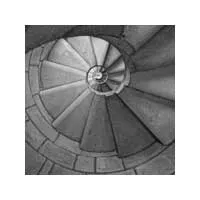Architecture is a testament to human ingenuity, creativity, and resilience. Through the centuries, it has reflected the cultural, historical, and social fabric of civilizations. From the grandeur of Gothic cathedrals to the minimalism of modern architecture design, each structure serves as a narrative of its time, capturing both the aspirations and limitations of the era in which it was conceived. Today, as the world strides forward with technological advancements and innovative materials, the role of architectural heritage in shaping the future remains a critical and fascinating subject.
At its core, architectural heritage is not merely a collection of old buildings or ancient monuments. It is a living repository of lessons, traditions, and principles that transcend time. The preservation and integration of these timeless concepts provide opportunities to blend the past with the present, ensuring that development does not come at the cost of cultural erosion. By embracing the essence of timeless architecture, designers can create spaces that resonate deeply with people while addressing modern needs.
Understanding Architectural Heritage
Architectural heritage is a multifaceted concept encompassing structures, urban landscapes, and the intangible cultural significance attached to them. It tells stories of craftsmanship, resourcefulness, and adaptability. For instance, ancient techniques for natural ventilation, solar orientation, and water management reveal how societies once harmonized their designs with nature. These principles remain invaluable in contemporary practices, especially as sustainable architecture becomes a pressing necessity.
What makes heritage architecture unique is its ability to evoke emotion and connection. Walking through a historical district or gazing at a centuries-old monument often instills a sense of awe and wonder. These spaces carry an intangible essence of continuity, grounding people in a shared history. In a rapidly changing world, this connection becomes even more essential, reminding us that progress need not mean the abandonment of our roots.
The Intersection of Heritage and Innovation
The balance between preserving the old and embracing the new is a delicate act. Many architects and urban planners grapple with the question: how can historical aesthetics and modern functionality coexist? The answer often lies in reinterpretation and integration. By respecting the principles of architectural heritage while employing contemporary methods, it is possible to create designs that honor tradition while addressing current demands.
A shining example of this synergy is adaptive reuse, where old buildings are repurposed for modern functions. This approach not only saves resources but also celebrates the history embedded within those walls. Imagine a 19th-century warehouse transformed into a vibrant community center or an ancient fortress reimagined as a luxury hotel. These projects demonstrate how architectural heritage can inspire innovative solutions, breathing new life into old spaces.
Moreover, modern architecture design can draw heavily from traditional elements without mimicking them outright. Features such as courtyards, arches, and intricate ornamentation can be reinterpreted in contemporary forms. In doing so, architects create structures that feel both familiar and forward-looking—a seamless dialogue between the past and the future.
Cultural Identity and Community Resilience
Architectural heritage plays a pivotal role in preserving cultural identity. In many cities, iconic buildings and traditional neighborhoods serve as markers of local history and pride. They provide a sense of belonging, fostering community resilience in the face of globalization and urban homogenization. Maintaining these cultural anchors ensures that cities retain their unique character, offering more than just functionality or economic utility.
Communities often rally around heritage sites, advocating for their protection and restoration. This collective effort not only preserves physical structures but also strengthens social cohesion. In many cases, heritage projects become catalysts for economic revitalization. Tourism, creative industries, and small businesses thrive in areas where cultural landmarks are preserved, further emphasizing their importance in modern urban planning.
Sustainability Rooted in the Past
As the global construction industry strives to reduce its environmental footprint, the principles of traditional architecture offer invaluable insights. Historical buildings often exhibit sustainable practices that predate modern technologies. Thick walls for thermal insulation, strategic use of local materials, and innovative ways to harness natural light and ventilation were commonplace in many architectural traditions. Reviving and adapting these methods to suit contemporary contexts could significantly contribute to eco-friendly building practices.
Timeless architecture also underscores the importance of durability. Many historical structures have stood for centuries, outlasting their more modern counterparts. By prioritizing longevity over short-term trends, architects can craft designs that endure, reducing the need for frequent replacements or extensive maintenance. The integration of heritage-inspired methods with cutting-edge materials and techniques presents a promising avenue for sustainable innovation.
Challenges and Ethical Considerations
While the potential of architectural heritage is immense, it is not without challenges. Preservation efforts often face financial constraints, bureaucratic hurdles, and conflicting interests. Urban development pressures, coupled with the need for modernization, sometimes lead to the neglect or destruction of historical sites.
Ethical considerations also come into play. Restoration projects must strike a balance between preserving authenticity and introducing new elements. Over-restoration can strip a building of its historical essence, while neglect risks losing it altogether. Architects, historians, and policymakers must collaborate to navigate these complexities, ensuring that interventions respect the original character of heritage structures while making them viable for contemporary use.
The Future: Merging Heritage with Technology
In an age dominated by rapid technological advancements, architectural heritage has the potential to benefit immensely from innovation. Digital tools such as 3D scanning, augmented reality, and AI-driven modeling enable precise restoration and reconstruction of historical buildings. These technologies not only ensure accuracy but also allow for the documentation and sharing of heritage in ways previously unimaginable.
Additionally, smart technologies can be integrated into heritage structures to enhance their functionality without compromising their historical value. Sensors, automated systems, and energy-efficient solutions can modernize these spaces, making them more accessible and sustainable. The fusion of tradition and technology offers exciting possibilities, demonstrating that heritage is not static but an evolving entity capable of adapting to contemporary needs.
A Call for Holistic Design
As architects, planners, and communities envision the future, there is a growing recognition of the importance of holistic design. This approach transcends the dichotomy of old versus new, focusing instead on creating environments that are inclusive, sustainable, and meaningful. Architectural heritage serves as both inspiration and foundation for such efforts, reminding us of the enduring values of craftsmanship, innovation, and respect for the environment.
The blending of heritage with modern architecture design is not about recreating the past but about reimagining it. It is a commitment to continuity, ensuring that future generations inherit a built environment that honors history while embracing progress. By crafting spaces that are both rooted and forward-looking, society can celebrate its diverse cultural narratives while building a more sustainable and equitable future.
Conclusion
Architectural heritage holds a profound relevance in shaping the future of our built environment. It provides lessons in sustainability, cultural continuity, and human-centered design that resonate deeply in an era of rapid change. By integrating the principles of timeless architecture with the innovations of modern architecture design, the past and present can coexist harmoniously, enriching both. As the world continues to evolve, the preservation and adaptation of architectural heritage offer a path to progress that is as respectful as it is innovative. In this journey, the stories embedded in bricks and mortar become not just relics of history but guiding lights for the future.







